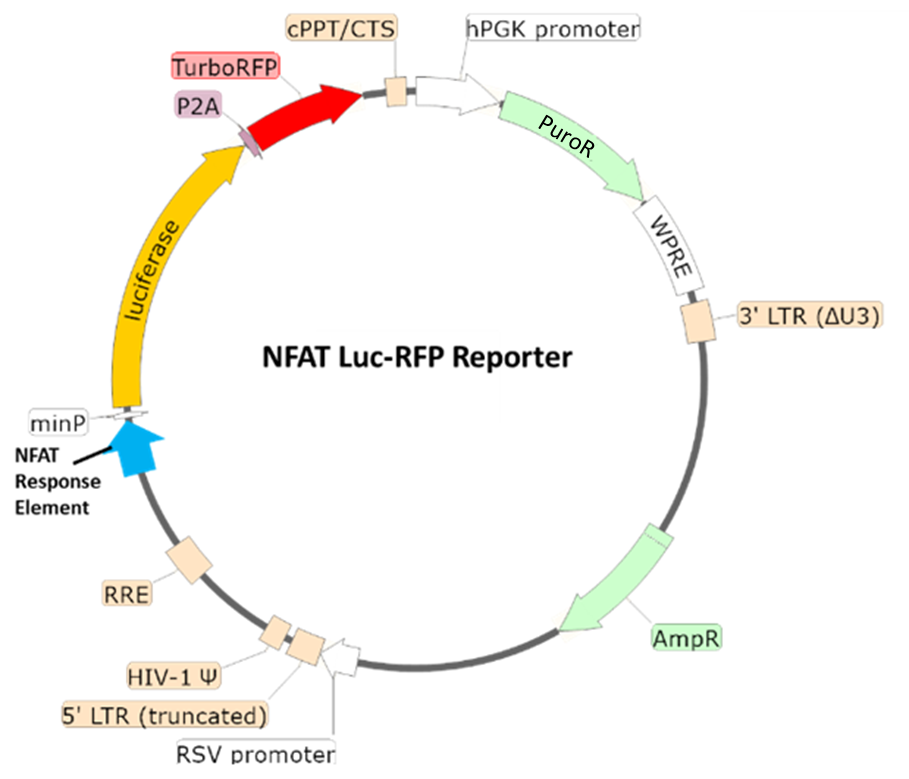NFAT Luciferase-RFP Reporter Lentivirus
The NFAT Luciferase-RFP Reporter Lentiviruses are replication incompetent, HIV-based, VSV-G pseudotyped lentiviral particles that are ready to transduce almost all types of mammalian cells, including primary and non-dividing cells. The particles contain a firefly luciferase and RFP (Red Fluorescent Protein) cassette driven by the NFAT response element located upstream of the minimal TATA promoter and a hygromycin or puromycin selection gene to generate stable clones. After transduction, activation of the NFAT signaling pathway in the target cells can be monitored by measuring the luciferase activity or RFP expression. RFP fluoresces red-orange when excited; it has an excitation wavelength of 553 nm, and an emission wavelength of 574 nm.

Schematic of the lenti-vector used to generate the NFAT luciferase-RFP reporter lentivirus (hygromycin).

Schematic of the lenti-vector used to generate the NFAT luciferase-RFP reporter lentivirus (puromycin).
| Name | Ordering Information |
| Jurkat cells | ATCC # TIB-152 |
| Anti-CD3 agonist antibody | BPS Bioscience #71274 |
| Thaw Medium 2 | BPS Bioscience #60184 |
| Polybrene | Millipore, #TR-1003-G |
| 96-well tissue culture, clear-bottom, white plate | Corning, #3610 |
| One-Step luciferase assay system | BPS Bioscience #60690 |
| Luminometer |
The lentivirus particles were produced from HEK293T cells. They are supplied in cell culture medium containing 90% DMEM + 10% FBS.
NFAT (Nuclear factor of activated T-cells) is a family of transcription factors that has an important function in immune responses, for example by inducing the expression of various cytokines (such as IL-2-3-4 and TNF-alpha) in T cells. Members of the NFAT family have been found in many tissue types including heart, skeletal muscle and brain cells. Through their role in the immune system, NFATs are involved in inflammation and these transcription factors are considered promising therapeutic targets for a variety of diseases.
NFAT is regulated by Ca2+ and the Ca2+/calmodulin-dependent serine phosphatase, calcineurin. NFAT proteins are phosphorylated and reside in the cytoplasm in resting cells; upon stimulation, they are dephosphorylated by calcineurin, translocate to the nucleus, and induce gene expression.



